- Home
- Roald Dahl
D is for Dahl Page 3
D is for Dahl Read online
Page 3
Random Roald Fact
Roald once put his first wife’s coat in the freezer to store it through the summer. Pat was horrified but the coat was pretty chilled out!
D is for Dream blower
Dream blower ~ Sometimes, when he was feeling particularly mischievous, Roald Dahl would prop a ladder against the side of his house, climb up to the bedroom windows—just as his children were drifting off to sleep—and push a bamboo cane through their window, pretending to be the BFG.
D is for Dust
Dreams ~ Roald Dahl slept for only three or four hours a night, but he crammed these hours full of dreams. One of his top-ten dreams starred himself as a tramp arriving at Lord’s Cricket Ground with a shabby case containing a million pounds. He told the English cricketers that if he played on their team, they would beat the Aussies. If the team lost, he would hand over his million pounds. Roald was always the last batsman, leading the side to victory. His dream usually ended with him and the team being driven around the country in an open-top bus, hailed by all as heroes. . . but of course, it was only a dream.
Dust ~ Roald Dahl’s writing hut was never dusted. Just like Willy Wonka’s inventing room, it was a top-secret place. Roald wouldn’t allow anyone inside, even to clean it, and so it remained full of grime and spiderwebs, but sparkling with ideas!
Easter-egg hunt ~ Roald Dahl loved Easter, especially the eggstraordinarily eggciting and eggstremely eggstravagant egg hunts he went on as a child.
Ellen ~ Roald Dahl used to refer to Ellen as his ancient half-sister, because she was twelve years older than he. After Roald returned home from the Second World War, with no idea whether his family was dead or alive, his ancient half-sister Ellen was the very first person he managed to make contact with, because Roald knew her married name, and she and her husband were in the phone book. She put him in touch with his mother and other sisters, who had moved to Aylesbury, England. Hurrah! (See Family Tree.)
Else ~ Roald Dahl’s middle sister hated school. When her mother decided to send her to boarding school in Switzerland, she devised a foolproof plan. She ate her train ticket at the Gare du Nord station in Paris and had to be collected and brought home! Roald loved Else very much. (See Family Tree.)
E is for Endings
El Superzorro ~ This is the truly fantastic title of the Spanish version of Fantastic Mr. Fox.
Endings ~ Of all Roald Dahl’s books, the most talked-about ending belongs to The Witches. (It’s hard to believe, but there might—just might—be one or two Dahl fans on earth who have yet to finish this wonderfully wicked book, so. . . you won’t find the actual ending here.) Roald was horrified to find out that in the film version of The Witches his quirky ending had been changed. He threatened to remove his name from the credits in protest. What do you think of the real ending? In some of Roald’s endings you discover that the main character in the story is a writer too and their book is the one you have just read—for example, The BFG and James and the Giant Peach.
Random Roald Fact
He once filled his ancient half-sister’s fiancé’s pipe with goat droppings.
E is for The Enormous Crocodile
The Enormous Crocodile ~ Roald Dahl said that his first picture book was one of the hardest books he’d ever written—because there were so few words, every single one had to count. This was the first of his books to be illustrated by Quentin Blake.
Esio Trot ~ The rather topsy-turvy title for this story is actually the word “tortoise” spelled backward. Aedi citsatnaf!
Essays ~ Roald Dahl’s book of essays—written in 1927 when he was eleven—is still in one piece. If you want to find out what the young Roald had to say about “Summer Holidays,” “Gardening,” “The Life Story of a Penny,” and “It’s Better to Play a Game and Lose than Never to Play at All,” you can read his essays at the Roald Dahl Museum and Story Centre in Great Missenden, England.
Fairies ~ If you ever visited Roald Dahl’s home in Great Missenden, you might have noticed some strange goings-on in the garden. If you looked carefully on the lawn, you would perhaps have seen the word “Hello!” written in yellow letters. Roald would have told you that this was a message from the fairies. In actual fact, it was one of his little tricks—he did this from time to time, writing the words in weedkiller when no one was looking. His daughters Ophelia and Lucy loved to see their names written on the lawn in fairy writing.
WARNING!
Do not try this at home, unless you want to spend your next five years’ pocket money on new turf.
F is for Fantastic Mr. Fox
Fantastic Mr. Fox ~ Roald Dahl first wrote this as a picture book called Mr. Fox. But as the story grew and grew, it became more and more fantastic. The book was renamed Fantastic Mr. Fox a matter of days before it went to print.
Feathered friends ~ Roald Dahl owned a hundred homing budgerigars—yellow ones, green ones, blue ones, and white ones. He also had a mynah bird that had been taught to say very rude things, like “*!*%!” (You didn’t think we’d print them in this book, did you?) If you repeat those words, you might end up like the mynah bird in Matilda, which was given away! Roald hated people shooting birds for sport—you can see this best in The Magic Finger.
Fighter pilot ~ During the Second World War, Roald Dahl flew several planes, including Hurricanes, Tiger Moths, and Gladiators, on dangerous and nerve-racking missions. After just eight weeks’ training with the Royal Air Force, Roald could fly upside down and get out of a dangerous spin—on his own. He was extraordinarily lucky to survive. Delve into Going Solo to find out more about his daring escapades.
F is for First-class letter-writers
Film critic ~ Although Roald Dahl wrote the screenplay for Willy Wonka and the Chocolate Factory (1971), he never liked the actual film. It was a box office success, though, so you’ll have to make up your own mind.
First-class letter-writers ~ Roald Dahl received more sacks of mail from Australia than from anywhere else in the world. But he only ever visited the country once, in 1989.
F is for First ever story
First ever story ~ During the Christmas holidays when Roald Dahl was ten, he wrote his first short story, “Kumbak II,” about a newly invented machine that could tune in to conversations from the past.
F is for Fishmonger
Fishing ~ On family summer holidays in Norway Roald Dahl and his sisters would row out into the fjord and drop their fishing lines, baited with mussels. Then they had to sit still in total silence in case the fish heard them and swam away. This was a big challenge for Roald, who always had lots to say. When he hooked a fish he’d shout, “I’ve got a whopper!” Once they’d caught enough, they’d row back to their mother, who fried the fish gently in butter and served it with boiled potatoes.
“I have never tasted fish as good.”
—ROALD DAHL
Fishmonger ~ Never mind the fishy smell, this was Roald Dahl’s favorite type of shop. On his seventieth birthday, a fisherman’s slab was set up in a marquee in the garden. As well as colorful, shiny fish of all sorts, there were fish and shell sculptures carved out of ice.
F is for Fleming, Ian
Fleming, Ian ~ Roald Dahl and the author of the James Bond books met in Jamaica and New York, through a mutual friend, and became good friends. They had lots in common—including their top-secret intelligence work during the 1940s (Fleming worked for the British Naval intelligence division). Roald wrote the screenplay for the Bond film You Only Live Twice and co-wrote the screenplay for Fleming’s Chitty Chitty Bang Bang.
Flood! ~ While training in the Royal Air Force during the Second World War, Roald Dahl spent time in Iraq. When the great river Euphrates burst its banks, he was on sandbag duty, desperately trying to save people’s homes from the rapidly rising water.
Flying ~ Roald Dahl learned to fly when he served in the Royal Air Force during the Second World War. He was far too tall (just over 6 1⁄2 feet) for lots of the planes he flew, spending many hours with his k
nees touching his chin—but loving every minute of it. It’s little wonder that many of his books feature flying: James in his giant peach, Charlie in Mr. Wonka’s elevator and Billy aboard a swan in The Minpins.
F is for Free fruit
Football ~ Roald Dahl supported Cardiff City Football Club. When he was young, the highlight of his Saturday was going to watch the match with Jones, the family’s football-mad gardener. Football is called “soccer” in the U.S.
Footprints ~ In the church-yard at Great Missenden, big, friendly, giant footprints lead to Roald Dahl’s grave.
France ~ This is where Roald Dahl spent his first holiday alone, when he was sixteen. He set out with a small suitcase, a large helping of curiosity and twenty-four pounds (about $125 in those days) in his pocket. He saw his first-ever palm trees in Marseilles and spent the next ten days exploring before heading back home. By the time he reached Dover he didn’t have a penny left, so he plucked up the courage to ask a kind-looking gentleman if he could borrow a few shillings. The man gave him a ten-shilling note as a present. Roald never forgot this kindness.
Free fruit ~ When Roald Dahl moved into Gipsy House, there were seventy old fruit trees in the orchard—apples, pears, plums, and cherries. There was so much fruit that the children in the village were invited to call in, borrow a ladder, and pick as much as they wanted.
F is for Freezer
Freezer ~ Roald Dahl invented an ingenious method of stretching shoes, so that they were more comfortable. If your shoes are too tight, fill plastic bags with water, put the bags in the shoes and the shoes in the freezer. The bags get bigger as ice forms and the shoes s-t-r-e-t-c-h!
WARNING!
Ask the owner of the freezer before you do this, or someone might defrost your shoe for their supper!
Funeral ~ Roald Dahl died of a form of leukemia in 1990 at the age of seventy-four. His family and friends, and the whole of the book world, were devastated. He was writing up to the very end. His last published book was The Minpins. Typically of Roald, he had booked the choir for his funeral while he was still alive and had left instructions for a simple ceremony in his local church, St. Peter and St. Paul. Peter Mayer, the man who was in charge of his publisher, Penguin Books, in 1990, came over from America to pay tribute to Roald. He began: “Dahl was a very big man. He took up much space. He made us and everyone aware of him.” This is how he is remembered—big, not simply in size but as a man, a writer, a father, and a human being.
Gadgets ~ When the boys at Repton School couldn’t afford the latest gadgets, they made them. And we’re not talking slingshots here—the resourceful lads made a wireless radio and a phonograph.
Gambling ~ As an adult, Roald Dahl was rather fond of gambling. Together with his friend Claud, he bred and trained racing greyhounds, which had a lucky streak for a while. Claud also taught Roald how to poach pheasants and tickle trout (see Danny the Champion of the World). Roald loved the card game Blackjack, too, and horse-racing. In his first job at Shell, he would place a bet on a horse and then sneak out of the office in the afternoon to buy a paper to see if he’d won. He never made his fortune from gambling!
Games ~ Roald Dahl particularly liked chess and Scrabble. He wasn’t very good at Scrabble, though, because of his wonky spelling. If you had played with him, you might have smelled a rat as he kept pulling the highest-scoring tiles from the bag. The answer. . . he had learned the feel of the indentations on the high ones!
G is for Gawpers
Gawpers ~ Roald Dahl became so famous that his home was soon well known, too. Uninvited celebrity-spotters often visited, just to see Gipsy House. They stared into the garden, hoping to catch a glimpse of Roald, took pictures, and generally gawped and gazed. Roald didn’t really mind. He was pleased to know that people admired him and his books.
George’s Marvellous Medicine ~ Roald Dahl found inspiration in all sorts of strange places. George Kranky’s grandma in George’s Marvellous Medicine had “a small puckered-up mouth like a dog’s bottom.” So, if you want to know what George’s grandma’s mouth was like. . . well, you know where to look.
GGG ~ When translated into Italian, the Big Friendly Giant becomes Il Grande Gigante Gentile. So, in Italy, the book is called GGG!
Giant ~ Roald Dahl was a giant of a man, towering above most people he met. He was just over 6 1⁄2 feet tall. It may have been his great height that made him clumsy. Roald was always knocking things over.
G is for The Giraffe. . .
Did You Know?
The world’s tallest man was American Robert Wadlow who reached a height of almost 9 feet!
Giant letters ~ Roald Dahl occasionally wrote letters to schools in BFG style and sent pieces for newsletters as though they really were from the BFG.
Gipsy House ~ In 1954, Roald Dahl became the proud owner of Little Whitefields—a smallish, square house in Great Missenden, Buckinghamshire. He bought it at auction, without ever having seen it. The house was altered, fixed, and extended, and in 1963 renamed Gipsy House by Roald to avoid confusion with his sister Else’s place, Whitefields. He called it Gipsy House because of the Gypsies who lived up the hill. Roald used to take them food, and in return they blessed the house. Roald lived there with his family for the rest of his life.
The Giraffe and the Pelly and Me ~ This book started with just three characters that Roald Dahl tried out on Quentin Blake. Quentin liked the idea of a giraffe because he’d never drawn one. He knew he could have fun with a pelican’s huge beak. And Roald wanted to include a monkey because he loved the one Quentin had drawn in The Enormous Crocodile. The characters were agreed—and the story followed.
G is for The Giraffe. . .
Gliders ~ Roald Dahl and his family could often be found flying model gliders on a hillside near their home. Perhaps this reminded Roald of swooping and soaring as a fighter pilot in the Second World War.
Gobblefunk A–Z ~ This is a collection of new words Roald Dahl made up while writing The BFG (283 in total). You can see them scattered around this book, but not all of them made it into the final version.
Going, going, gone! ~ Roald Dahl enjoyed the speed and excitement of auctions (public sales where an auctioneer accepts higher and higher bids from the “audience” and bangs his hammer when something is sold). One of his last books, The Vicar of Nibbleswicke, went under the hammer during an auction that Roald followed eagerly from his hospital bed. All proceeds were donated to the Dyslexia Institute.
Going Solo ~ This book continues Roald Dahl’s story from where Boy left off. It tells of his life in Africa working for Shell, and in the Royal Air Force in the Second World War. There are stories of deadly snakes and gentle lions and death-defying dogfights in the skies above Greece.
G is for a Grand Plan
Golf ~ Roald Dahl first swung a golf club when he was only nine years old. From then on, he played wherever he went: Tanganyika, Kenya, Egypt, Sierra Leone, France, America. . . . But this relaxed game wasn’t without danger. In Dar es Salaam, golfers had to watch out for cobras, and in Lagos, monkeys pelted them with unripe mangoes!
“One of the loveliest games in the world. . . ”
—ROALD DAHL
A grand plan ~ When he was in the hospital once, Roald Dahl desperately wanted to see his dog Chopper. He came up with a cunning plan to smuggle him onto the premises (even though animals were strictly forbidden).
Swear family to secrecy.
Ask a loyal family member to smuggle a large basket into Roald’s hospital room.
Lower basket out of the window down to the ground—five floors below.
Instruct another family member to pop Chopper into the basket.
Up goes the basket and—ta-daaaa!—Roald spends thirty minutes with his favorite dog.
G is for a Grand Plan
Sadly, the plan was never tested out because no one could trust Chopper to keep quiet and still!
The Great Automatic Grammatizator and other stories ~ This book of short stories was published
in 1996 and contains a selection of Roald Dahl’s adult stories from his collected works. Highly recommended for teenage readers. (In the U.S., it’s called The Umbrella Man.)
The Gremlins ~ You might think James and the Giant Peach was Roald Dahl’s first children’s book but it wasn’t. Long before that he wrote The Gremlins. This story first appeared in Cosmopolitan magazine in 1942 and it was published as a book the following year, although it is now out of print. It is about “gremlins,” mischievous sprites or troublemakers who plagued Royal Air Force pilots. Before he knew it, Roald was being whisked off to Hollywood to work with the great Walt Disney on a movie version of his story. Unfortunately, the film was never completed for various reasons, including its going over budget and because opinion polls showed a drop in interest in war-related topics.

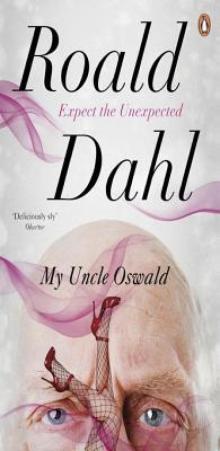 My Uncle Oswald
My Uncle Oswald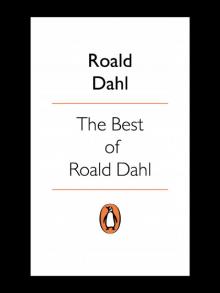 The Best of Roald Dahl
The Best of Roald Dahl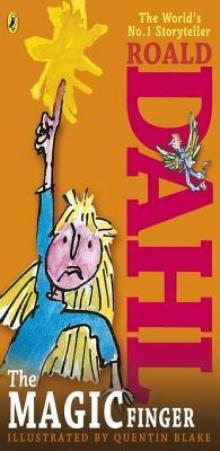 The Magic Finger
The Magic Finger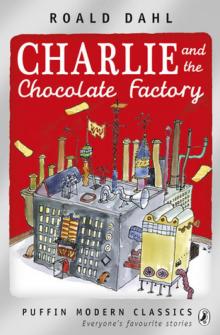 Charlie and the Chocolate Factory
Charlie and the Chocolate Factory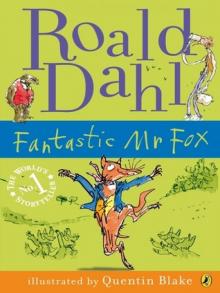 Fantastic Mr Fox
Fantastic Mr Fox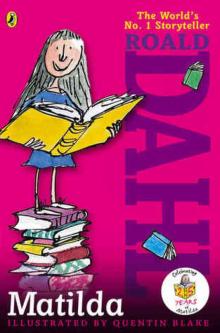 Matilda
Matilda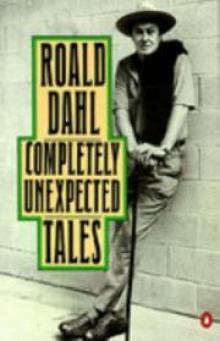 Completely Unexpected Tales: Tales of the Unexpected. More Tales of the Unexpected
Completely Unexpected Tales: Tales of the Unexpected. More Tales of the Unexpected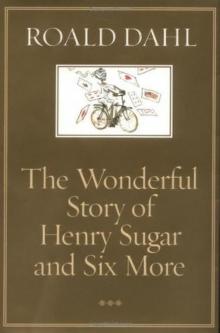 The Wonderful Story of Henry Sugar and Six More
The Wonderful Story of Henry Sugar and Six More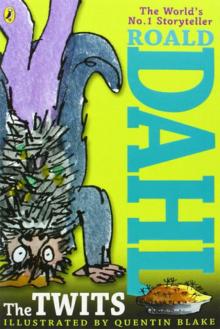 The Twits
The Twits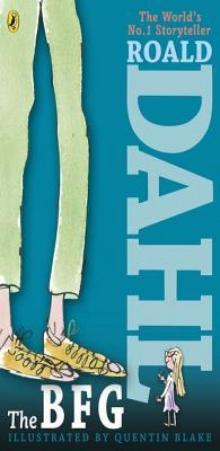 The BFG
The BFG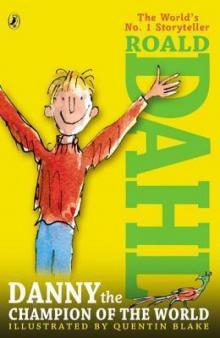 Danny the Champion of the World
Danny the Champion of the World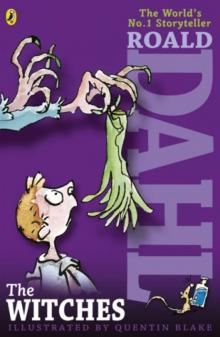 The Witches
The Witches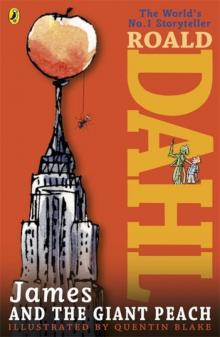 James and the Giant Peach
James and the Giant Peach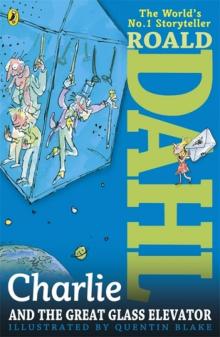 Charlie and the Great Glass Elevator
Charlie and the Great Glass Elevator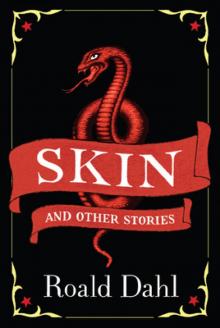 Skin and Other Stories
Skin and Other Stories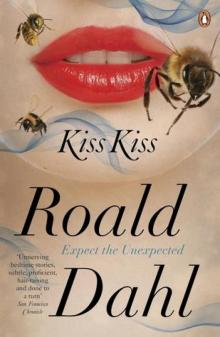 Kiss Kiss
Kiss Kiss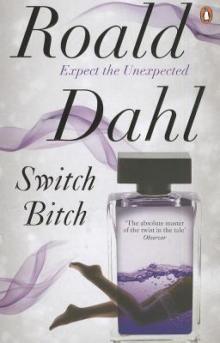 Switch Bitch
Switch Bitch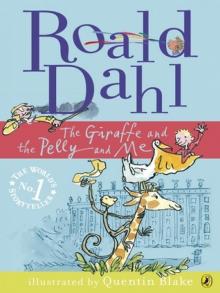 The Giraffe and the Pelly and Me
The Giraffe and the Pelly and Me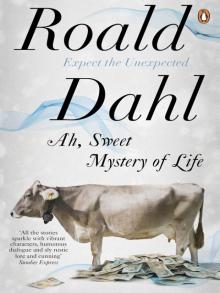 Ah, Sweet Mystery of Life
Ah, Sweet Mystery of Life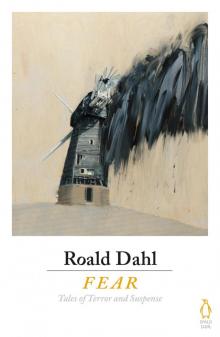 Fear
Fear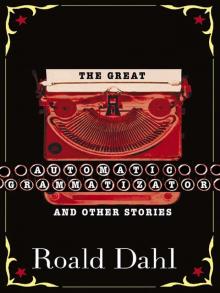 The Great Automatic Grammatizator and Other Stories
The Great Automatic Grammatizator and Other Stories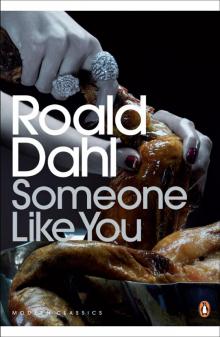 Someone Like You
Someone Like You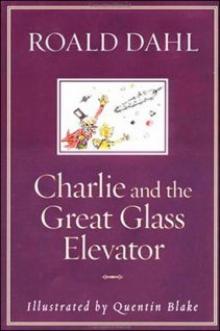 Charlie and the Great Glass Elevator c-2
Charlie and the Great Glass Elevator c-2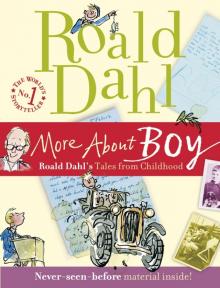 More About Boy
More About Boy Tales of the Unexpected
Tales of the Unexpected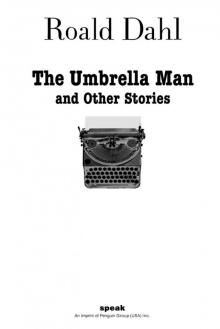 The Umbrella Man and Other Stories
The Umbrella Man and Other Stories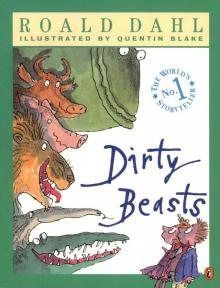 Dirty Beasts
Dirty Beasts Roald Dahl's Mischief and Mayhem
Roald Dahl's Mischief and Mayhem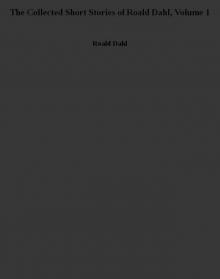 The Collected Short Stories of Roald Dahl, Volume 1
The Collected Short Stories of Roald Dahl, Volume 1 The Missing Golden Ticket and Other Splendiferous Secrets
The Missing Golden Ticket and Other Splendiferous Secrets Billy and the Minpins
Billy and the Minpins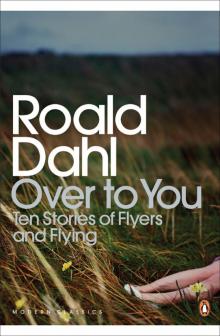 Over to You
Over to You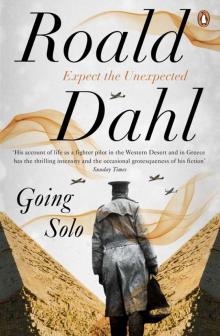 Going Solo
Going Solo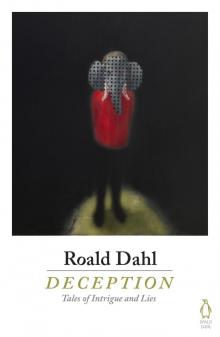 Deception
Deception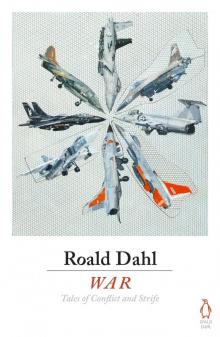 War
War Man from the South ee-3
Man from the South ee-3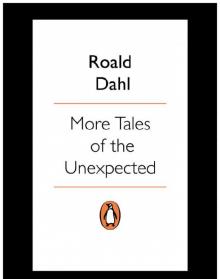 More Tales of the Unexpected
More Tales of the Unexpected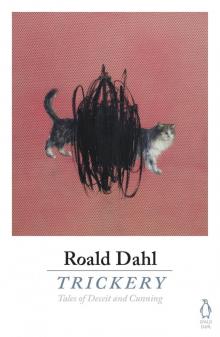 Trickery
Trickery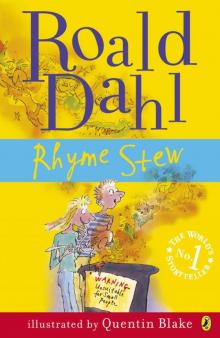 Rhyme Stew
Rhyme Stew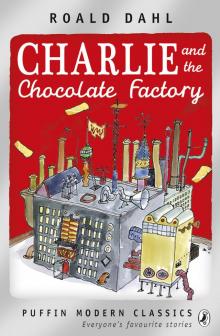 Charlie and the Chocolate Factory (Puffin Modern Classics relaunch)
Charlie and the Chocolate Factory (Puffin Modern Classics relaunch)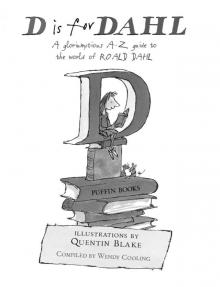 D is for Dahl
D is for Dahl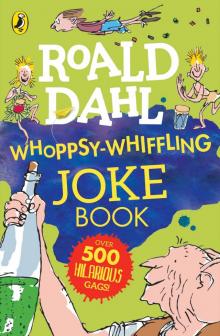 Roald Dahl Whoppsy-Whiffling Joke Book
Roald Dahl Whoppsy-Whiffling Joke Book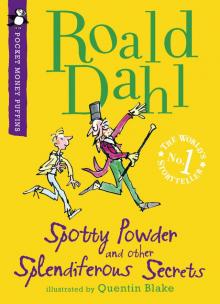 Spotty Powder and other Splendiferous Secrets
Spotty Powder and other Splendiferous Secrets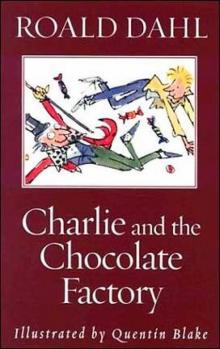 Charlie and the Chocolate Factory c-1
Charlie and the Chocolate Factory c-1 Boy
Boy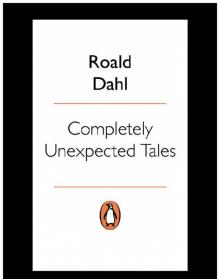 Completely Unexpected Tales
Completely Unexpected Tales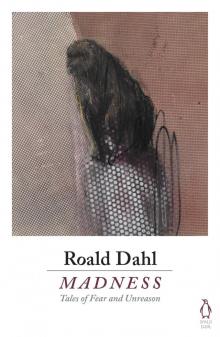 Madness
Madness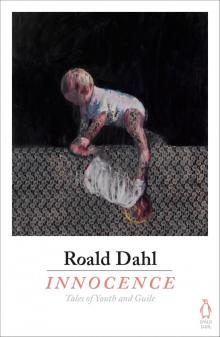 Innocence
Innocence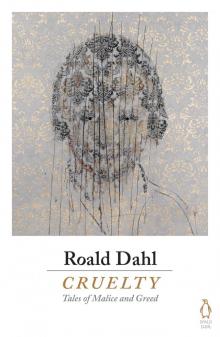 Cruelty
Cruelty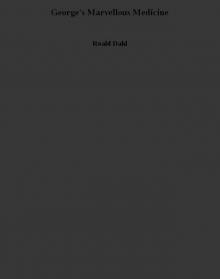 George's Marvellous Medicine
George's Marvellous Medicine